These days, in Spain, people are talking about depopulation. In Spain, many villages are left without children and without young people, due to a lack of work and services.
But there is a hope that is coming from abroad: some foreigners are buying small villages (small villages), to live and probably to rent some houses. It is a good possibility of business and I think the idea is very good.
Three Dutch families have bought an abandoned village in Spain.
And the same thing has been done by an Englishman (Neil Christie), who has bought a small village, in Asturias (Arruñada) –close to Galice--.
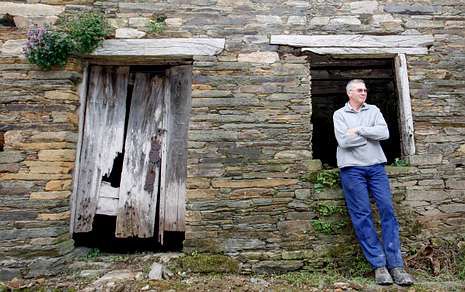
Neil Christie
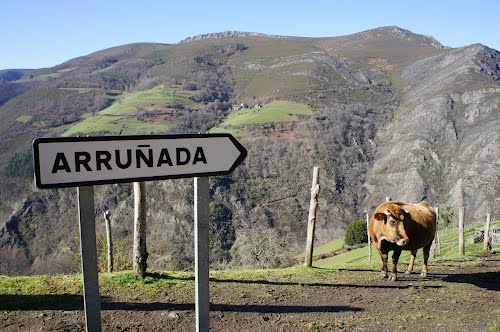
Arruñada
Neil Christie spent 45,000 Euros, when he bought the tiny village of Arruñada, in Asturias in 2006. The properties of Neil extend by two hectares of green meadows, leafy forests and four constructions in ruins. This British, who is on his way to 65 years old, left everything more than a decade ago to radically change his lifestyle.
"It was not premeditated, my wife is a Spanish and English teacher and has worked in several exchange programs in Spain, I took advantage of some of her trips to take vacations, we had never been to the northwest of Spain, and one weekend we came to take a look at Galicia and Asturias, we thought it was a beautiful place to spend a longer holiday", Christie recalls.
In the end, after a couple of years of reflection, Neil accepted an early retirement offer and moved with his wife and two daughters to Llan, a village of 16 inhabitants, which is five minutes from Taramundi, the population with more inhabitants of the area --hardly 700-- and capital of the Asturian council that bears the same name. Carlisle, the English city where this television producer lived until then, had 75,000 inhabitants.
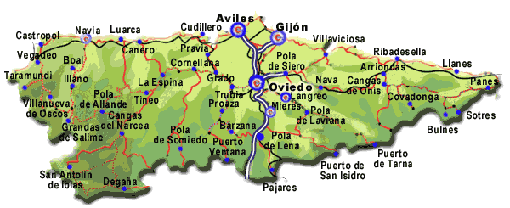
Taramundi on the left side of the map
If you want to visit that area, you can sleep at some small hotels like “Casa Petronila”, 6 kilometres from Arruñada.
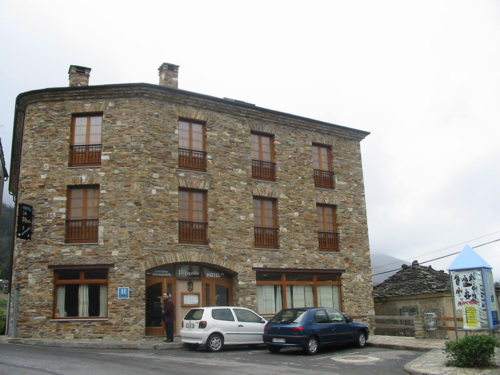
Hotel-Restaurant Casa Petronila
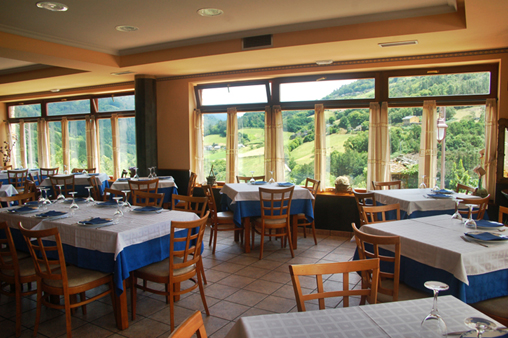
The main dining-room of the Restaurant
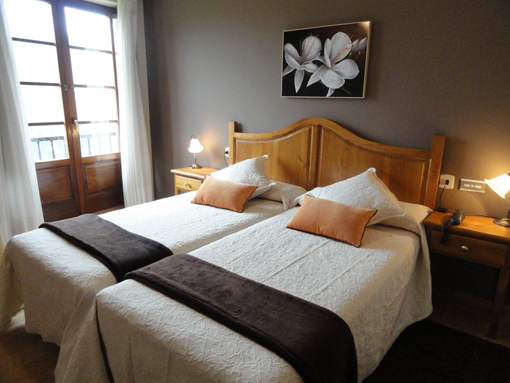
One bed-room
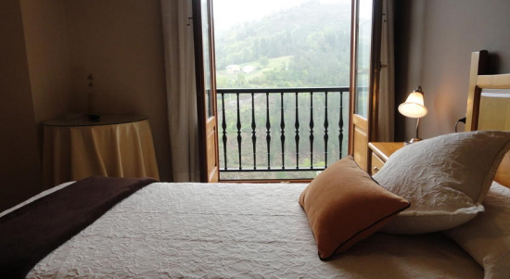
Another view from the bed-room
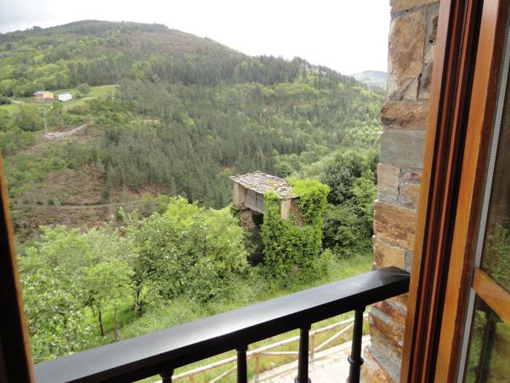
A view from the small balcony
These are some data of the Hotel:
Address: Plaza del Campo, s/n. Taramundi.
Telephone numbers: Spain: 901 988502. International: + 44 20 3320 2609
The change, for Neil, was important. "I did not need to quit my job, but it was a unique opportunity, I was in my fifties and I wanted to do something different", Neil said. Shortly after moving to Llan, Neil discovered the bargain of Arruñada, a small village of four demolished houses, that is an hour from Taramundi by car, or what is the same, in the middle of nowhere. "The main problem is the lack of basic infrastructure, such as communications, which are scarce", he says of his new life in the Asturian mountains. "The advantages are much greater: a different lifestyle, the price-quality ratio, the least pollution, silence and weather, which is wonderful, it is five or six positive points against a negative one, it seems like a good deal".
For 45,000 euros, it seems cheap and timely. "It is, but you must also consider the taxes, the costs of the reforms and all the little details that come up over time", clarifies Neil, a man who can say he lives in his own village. He himself --with the help of his wife, Rosa, when she has a party at the academy-- has built one of the four houses in ruins keeping the rustic look and original stone construction of the village. "This year it will be 99% finished and it is already habitable".
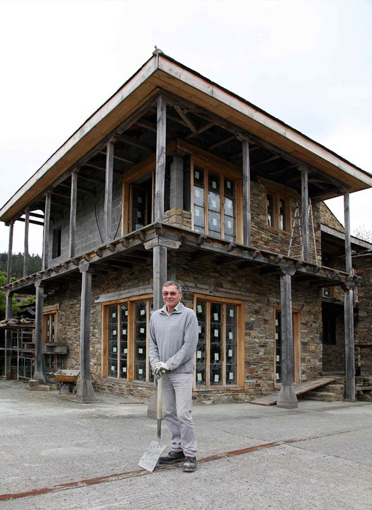
Neil reforming his house
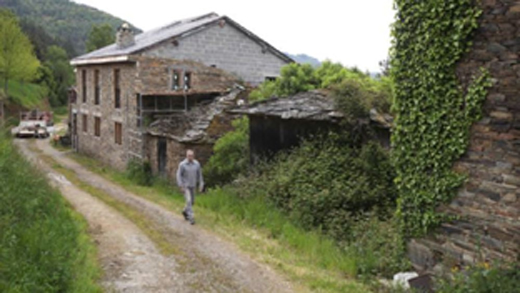
Neil walking before his house
Neil calculates he has spent more than 150,000 euros, on the first reform, and now he has started to reform the second house of the small village. The merit is that the manpower has been a matter for him. "Money is not a bottomless pit, much of it has been achieved through the sale of our residence, in the UK. We do not have a house there anymore, I hope it is not a big mistake with this Brexit", he jokes. The two daughters of the couple have returned to their country of origin, to study at the university and find good job opportunities, and they think they will not return soon.
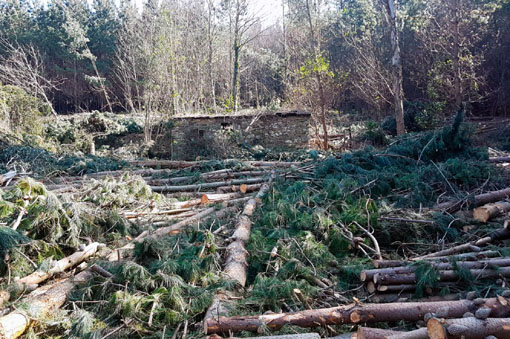
The second house
"It has been very good for them to have grown up in Spain, since they have almost native Spanish as well as English, I do not think they are following our steps, because this area is not for young people, there is no nightlife or leisure, in Taramundi there is nothing of this", Neil recognises. Of course, they have relatively close to a cider house and some rural restaurant, so at least they can still go for a drink. While we talk on the phone, the call is cut a couple of times. "Sorry, I have moved half a metre, and the good sign is only here". I imagine that he will have returned to the corner of the calls.
Of course, in his small village, there is no television or Internet. For not having, there is no telephone cable and, when they arrived, there were no electricity poles or drinking water. With the help of the council of the area, they have managed to get them light, water and have improved the access road, which can now use cars beyond the all-terrain. "They are interested in people coming to live, because they are peoples who are part of the heritage of the territory and, if there were no one, they would literally be a pile of stones and the character and uniqueness of the area would be lost".
At first, friends and family thought they were crazy, but now they enjoy the small village of Neil every summer. In the end, by plane it does not take more than an hour and a half. Of course, later you have to climb the mountain and find among the trees the remote village of Christie, Arruñada.
The real estate agency “Abandoned Villages”, which has an extensive catalog of villages and small villages, was the one who managed the paperwork and the rest of the bureaucracy to Neil. "Seven out of ten buyers are foreigners, there are many French, Belgians, Swiss, Americans and Mexicans. The Spaniards are leaving their money, more and more, although they invest more in land, fields and vineyards", explains Elvira Fafián, Manager of AldeasAbandonadas .com.
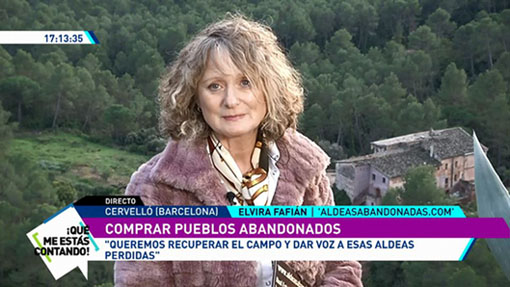
Elvira Fafián
Why do villages cost as cheap as the Neil one, is there a trick?, "There are no tricks, no, there are owners who cede the village for a few years, so that people live and rehabilitate it; there are owners who sell the village at low prices, because they pay more to pay taxes to the tax office", says Fafián, who distinguishes three profiles of buyers: Spanish families seeking to escape the big city, entrepreneurs who want to do business with cheap land and foreigners who are attracted by the climate and social conditions of the country.
Selling a village is not easy, and many have been with the "for sale" sign for years. There is everything: from small villages, that a municipality gives free in exchange for their rehabilitation, to villages of 75 houses that cost between 400,000 and 500,000 euros. "Where it is cheaper is in the area of Galicia, where there are several opportunities for 30,000 euros.The prices depend more on whether they are remote areas or relatively close to large population centres. If they want to sell, the owners can fall 20%. -25% prices", the real estate says. Teruel, Soria, Burgos, Asturias and Galicia are the areas of Spain with more abandoned villages for sale.
Cristóbal and Milagros, two Andalusians tired of the heat and the beach of Malaga, decided to follow the same path than Neil, a couple of years ago. In their case, they plan to open a rural tourism complex in the village of Xudán, near A Pontenova, Lugo. The five hamlets and the 14 hectares of land cost them "only" 60,000 euros.
"We watched a program, on the TV, where the village was coming out, and we were just vacationing in the area, we went to see the village and they were ready, I always liked Galicia, because it is so hot here ...", Milagros explains. he works in the banking sector. "Here is always the same, heat and beach, there is no mountain or healthy life, we want to change the food, the environment, nature, everything, we are tired of being here".
They have just begun the reforms and hope to move in summer, when the children finish school. "There are aid from the Xunta (of Galice) and the European Union, to promote the repopulation of rural territory", says Mili, who knows firsthand that banks do not give many loans for this type of adventure. However, she confirms what they tell us from the real estate agency. "The municipality collaborates and gives you a hand with water, electricity and other basic services, they are the first interested in recovering the life of the area".
You have to work hard and have it clear, but being able to have a village, why settle for a small apartment, in the centre of a big town?. Think about it.
I have thought that the Government of Spain should think about the possibility of creating employment, in abandoned villages, helping foreigners, who want to invest in those villages, to hire unemployed people, who want to rehabilitate those villages, restoring houses and creating companies of carpentry, plumbing, supermarkets, pharmacy, etc.
So, I would also like to advise you to think about that possibility of coming to Spain, to buy a village --even if it is very small--. If you are interested in this idea, you can go to the web: https://www.aldeasabandonadas.com/venta-de-aldeas/46-venta-de-aldeas-resto-espana.html ,to see in which village you are interested.
Well, I hope that you will like this article.
Until my next post, kind regards,
Luis.
Please click below:
